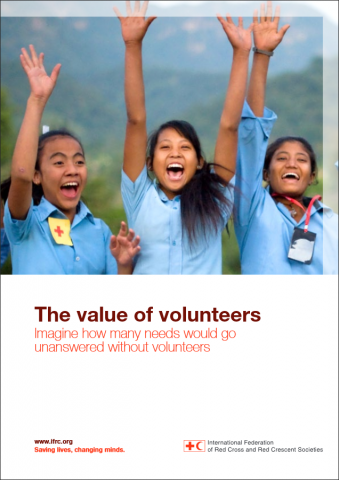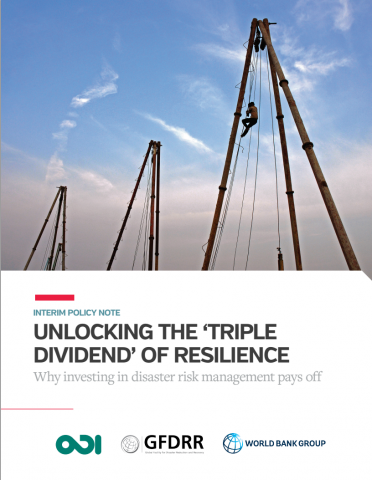Unlocking the “triple dividend” of resilience – Why investing in disaster risk management pays off


The risk of a disaster can cause economic losses even before a disaster strikes. Investing in disaster resilience, therefore, can yield a ‘triple dividend’ by (1) avoiding losses when disasters strike; (2) unlocking development potential by stimulating innovation and bolstering economic activity in a context of reduced disaster-related background risk for investment; and (3) through the synergies of the social, environment and economic co-benefits of disaster risk management investments even if a disaster does not happen for many years.
The devastating effects of disasters are experienced regularly and are widely documented: Lives are lost, economies suffer, essential infrastructure is destroyed, firms lose assets and markets, households become trapped in poverty, and their welfare is severely reduced with effects on education, health and income.
Even if a disaster does not occur for a long time, investing in DRM yields real benefits in both the short and long term. Reducing disaster-related ‘background risk’ enables forward-looking planning, long-term capital investments, and entrepreneurship. In addition, and regardless of whether a disaster hits or not, DRM investments generate co-benefits as a result of the ‘spill-over’ of social, economic and environmental benefits arising from DRM investments themselves. These benefits are in addition to the avoided loss and damage, when a disaster strikes. Put simply, not investing in DRM is a missed opportunity for social, economic and environmental progress.
The Global Facility for Disaster Reduction and Recovery (GFDRR) at the World Bank and led by the Overseas Development Institute (ODI), 2015
UNLOCKING THE ‘TRIPLE DIVIDEND’ OF RESILIENCE. Why investing in disaster risk management pays off
http://www.odi.org/sites/odi.org.uk/files/odi-assets/publications-opinion-files/9501.pdf
